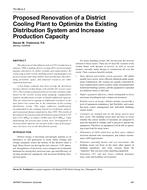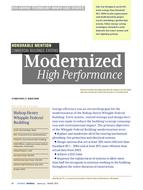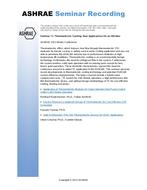The long-term performance in respect to moisture management within any wall assembly depends on the hygrothermalresponse of the wall. Critical factors in estimating the longevity of wood-frame structures include limiting the temperature range,wood moisture content, and time of exposure to conditions suitable for the onset, growth, and propagation of mold and rot to occur.The intent in constructing highly insulted wood-frame walls is evidently to reduce energy usage in buildings, but the energy savingsas might accrue necessarily cannot be achieved if these walls fail prematurely due to the effects of moisture accumulation in wallcavities. Several approaches to assessing the vulnerability of wood-frame structures to deterioration have been developed in recentyears, some of which suggest applying a limit-states design approach to the performance assessment of the assembly. In this paper,a limit-states design approach is described that forms the basis of a performance assessment method for wood-frame wall assemblies.The approach is based on the requirements set out in ISO 13823. The approach, developed for the Moisture Managementof Exterior Wall Systems (MEWS) project, is described; in it, the relative humidity temperature index (RHT index) is used as abasis for evaluating the long-term performance of wood-frame assemblies. This index captures the duration of the coexistenceof moisture and thermal conditions above a set of threshold levels for which the risk to the formation of mold growth and woodrot is unacceptably high. An example is given to illustrate the application of the approach using the RHT index when assessingthe moisture management performance of a North American stucco-clad wood-frame wall assembly in relation to wood rot.
Citation: Thermal Performance of Exterior Envelopes of Whole Buildings XIII, Conference Papers
Product Details
- Published:
- 2016
- Number of Pages:
- 11
- Units of Measure:
- Dual
- File Size:
- 1 file , 2.4 MB
- Product Code(s):
- D-BldgConf16-22


